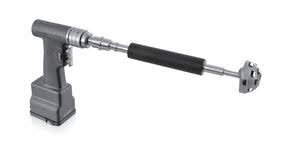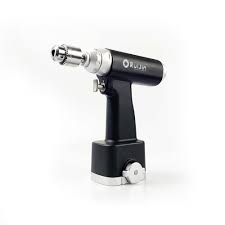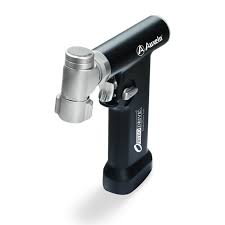Overview
A Microdebrider is a precision surgical instrument designed for the removal of soft tissue, bone, or cartilage in a controlled and minimally invasive manner. It is commonly used in otolaryngology (ENT), orthopedic, and neurosurgical procedures. The tool consists of a motorized handpiece with a rotating or oscillating blade connected to a suction system, enabling simultaneous cutting and evacuation of tissue. Its accuracy and efficiency make it ideal for delicate surgical environments where precision is paramount.
Design and Mechanism
The microdebrider consists of three main components: a console unit, a powered handpiece, and a hollow cutting blade with integrated suction. The blade rotates or oscillates at high speeds, allowing for controlled and consistent tissue removal. The built-in suction immediately clears the surgical field of excised material, improving visibility and reducing the need for frequent manual cleaning.
Microdebriders come with various blade designs, including straight, curved, and angled options, to suit different surgical sites and procedures. Some models feature adjustable speeds and programmable settings, offering surgeons complete control over tissue removal.
Surgical Applications
Microdebriders are used in a wide range of minimally invasive procedures, including:
-
ENT Surgery (Ear, Nose, Throat): Especially in functional endoscopic sinus surgery (FESS) for removing nasal polyps, infected tissue, or bony obstructions.
-
Laryngeal Surgery: For removing lesions, polyps, or abnormal growths from the vocal cords or larynx.
-
Orthopedic Surgery: To debride soft tissue or bone during arthroscopic procedures.
-
Spine Surgery: For disc removal or bone trimming during decompression.
-
Neurosurgery: In selected cases for precise soft tissue removal near delicate nerve structures.
Benefits
-
Minimally Invasive: Reduces trauma to surrounding tissue and shortens recovery time.
-
High Precision: Ideal for work near critical anatomical structures.
-
Simultaneous Cutting and Suction: Improves surgical visibility and efficiency.
-
Reduced Bleeding: Continuous suction helps manage fluid and bleeding effectively.
-
Customizable Blades: Enhances versatility for different procedures and patient anatomies.
Sterilization and Safety
Microdebrider components, particularly the blades and handpiece, require thorough cleaning and sterilization between uses to maintain hygiene and performance. Most are compatible with standard autoclaving processes, while some delicate parts may require specific handling per manufacturer guidelines. Proper training is essential for the surgical team to ensure safe operation and maintenance.
Conclusion
The microdebrider is a critical advancement in modern surgery, offering a combination of precision, efficiency, and safety. Its ability to cut and suction simultaneously makes it an indispensable tool in various specialties, especially where delicate tissue management is required. As technology evolves, newer microdebriders continue to enhance surgical outcomes and patient care.






Reviews
There are no reviews yet.